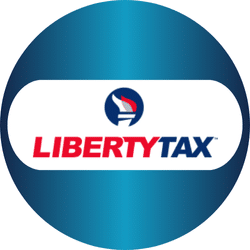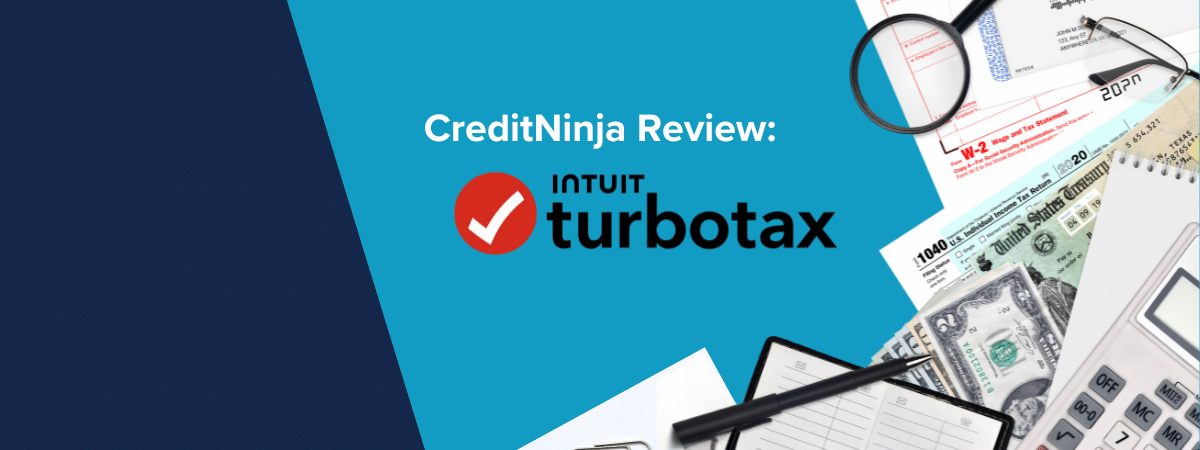Tax season has begun, but are you ready to file? Filing can be confusing–especially if you’re just starting out. But don’t worry, CreditNinja is here with a crash course in taxes 101. We’ll explain the differences between federal and state taxes, what documents you need, and much more. First, check out our helpful tax season partners to get started today:

FreeTaxUSA offers free federal tax returns for everyone! File your federal taxes for free and get low-cost options for your state taxes. Get started with FreeTaxUSA!

Their product & pricing comparison makes it easy to choose the best online tax filing option to simplify your taxes for your family or your business.. Check out Liberty Tax today!

E-file.com is an IRS e-file software that helps taxpayers file their income taxes faster, easier and more accurately than with traditional paper forms. Learn more about E-File.com!
Federal Taxes: Everything You Need to Know
There are various types of federal taxes, but the most common one is income tax. Federal income tax is levied by the Internal Revenue Service (IRS) on individual and corporate annual income. Federal income taxes are the federal government’s primary source of revenue. The government uses this revenue to fund services such as health care, education, defense, and infrastructure.
Federal income taxes are progressive, meaning the tax rate increases with income. The more you earn, the more you will have to pay. Tax rates can change frequently, but due to inflation adjustments, they have remained the same since 2023.
Here is a breakdown of the 2025 income tax brackets¹:
| Tax Rate | Single Filers | Married Couples Filing Jointly |
| 37% | Over $626,350 | Over $751,600 |
| 35% | $250,525 to $626,350 | $501,050 to $751,600 |
| 32% | $197,300 to $250,525 | $394,600 to $501,050 |
| 24% | $103,350 to $197,300 | $206,700 to $394,600 |
| 22% | $48,475 to $103,350 | $96,950 to $206,700 |
| 12% | $11,925 to $48,475 | $23,850 to $96,950 |
| 10% | $11,925 or less | $23,850 or less |
State Taxes: Who Needs To Do Them And What You Should Know
Forty-two U.S. states and Washington, D.C. collect a state income tax. This direct tax is levied by the state on income earned by residents and non-residents who earn state-sourced income. The only states that do not levy a state income tax are Alaska, Florida, Nevada, New Hampshire, South Dakota, Tennessee, Texas, Washington, and Wyoming.
State income taxes vary based on your state of residence, but only ten states use a flat tax rate. All other states use a system similar to the federal income tax. In addition to state income taxes, you should be aware of sales tax requirements in your state. Sales tax rates vary widely and can affect your overall tax burden.
Here’s everything you need to know about filing your state tax return:
How To File Taxes Online
You can file your tax return online by using guided tax software. There are various tax preparation software options to consider, so it’s critical to consider user experience, convenience, and cost. Some programs are free, while others may charge you for requiring additional forms or schedules.
For example, TurboTax is free if you only have a simple Form 1040 return. This simple tax return does not include schedules, except for the Earned Income Tax Credit, Child Tax Credit, and Student Loan Interest. If your situation doesn’t qualify for a simple Form 1040 return, you’ll need to pay for the Deluxe or Premium plan.
Most Americans file and pay taxes online. In fact, the Internal Revenue Service (IRS) recommends e-filing for the most accurate returns and fastest refunds. As a tax preparer, it’s critical to compare your options and read reviews to find the best software that fits your financial needs.
Can I File Taxes For Free?
You can file your tax return for free during tax season by using an IRS-sponsored program or a no-cost option from a reputable tax software company. Through IRS Free File, individuals can file an income tax return online using guided tax preparation software. However, your adjusted gross income (AGI) must have been $84,000 or less. If your AGI is higher, you may still file your federal tax return for free by completing and mailing fillable forms.
For 2025, the following trusted partners are participating in IRS Free File²:
- 1040Now
- Drake (1040.com)
- ezTaxReturn.com
- FileYourTaxes.com
- On-Line Taxes (OLT.com)
- TaxAct
- TaxHawk (FreeTaxUSA)
- TaxSlayer
Taxes 101: What Documents Do You Need to File Taxes?
There are various tax documents and forms you need to file your taxes. It’s critical to have these documents on hand to claim all of your tax deductions and credits for a maximum refund.
Here’s what you’ll generally need to file your tax return:
Income Documents
- W-2 Forms
- 1099 Forms
- 1099-MISC — Independent contractor income.
- 1099-INT — Interest earnings.
- 1099-DIV — Dividend income.
- 1099-G — Unemployment compensation and other government payments.
- 1099-R — Distributions from pensions, annuities, retirement, or profit-sharing plans.
- Records of all self-employment income. You should only pay self-employment tax if your net earnings are more than $400.
Documents for Tax Deductions
- 1098 Forms
- Form 1098 — Mortgage interest.
- Form 1098-T — Tuition payments.
- Form 1098-E — Student loan interest.
- Receipts for charitable donations.
- Medical and dental expense receipts.
- Receipts for property taxes and state income taxes or sales taxes.
Tax Credit Documents
- 1095-A Forms — Health Insurance Marketplace statement, required for claiming the Premium Tax Credit.
- Educational Expenses — Form 1098-T for tuition, which might qualify for education credits.
Other Important Documents
- Social Security Numbers for yourself, your spouse, and dependents.
- Previous year’s tax return
- Records of contributions to retirement accounts.
What Happens If You Don’t File Taxes?
Failing to submit your tax return when you owe taxes will result in a Failure to File penalty. This penalty fee is equal to 5% of your unpaid tax liability for each month your return is late. This fee can go up to 25% of your total unpaid taxes. Suppose you owe taxes ($1,000) and failed to file for six months. In that case, you would pay 25% of $1,000, which is $250.
In addition, the IRS can charge interest on your unpaid tax balance and penalty fees. The IRS uses the federal short-term rate and then adds a 3% interest charge. If your penalty fee is $250, then the interest charge would be approximately $24.66.
How To File Previous Years’ Taxes
You can file your past-due return the same way you would file an on-time return. If you have received a notice from the IRS, make sure to send your past-due return to the location indicated on the notice.
It’s critical to file past-due returns as soon as possible to avoid further penalties and interest charges. If you are due a refund, you can lose it if you don’t file your tax return within 3 years of the return due date.
FAQ: Taxes 101
Filing your federal income taxes ensures compliance with the law and allows you to claim refunds or benefits, such as tax credits, you may be eligible for.
You may owe federal taxes if your employer didn’t withhold enough, you earned self-employment income or didn’t qualify for enough standard or itemized deductions and other credits to offset your income.
Child support does not directly take state or federal taxes, but unpaid child support can result in tax refund offsets.
Yes, depending on the tax filing service you use, you may be able to pay federal taxes with a credit card, but processing fees may apply. Other tax filing options require users to pay with a debit card or directly from their checking account.
Yes, all tips are considered taxable income and must be reported on your tax return.
Interest from municipal bonds is typically considered tax-exempt at the federal level.
You can only claim yourself as a dependent if no one else can legally claim you on their tax return.
“Married filing jointly” combines both spouses’ incomes and often qualifies for higher deductions, while “married filing separately” keeps incomes separate, which may limit deductions but offer some financial privacy.
A personal exemption was for yourself or your spouse, while a dependency exemption was for qualifying dependents, though these were eliminated by the Tax Cuts and Jobs Act starting in 2018.
You can file back taxes by completing and submitting the required tax forms for the applicable years, either online or by mail, along with any payments owed.
You can request a copy of your W-2 from your employer or request a wage and income transcript from the IRS.
You can use Form 4852 as a substitute for a W-2 if your employer hasn’t provided one, or report self-employment income using other documentation.
Disability income may be taxable if it exceeds specific thresholds or is combined with other taxable income.
You can get a copy of your tax return online through the IRS’s “Get Transcript” tool or by requesting a full copy for a fee.
A Word From CreditNinja About Doing Your Taxes
Filing your own taxes ensures compliance with the law and allows you to claim refunds or benefits you may be eligible for. Using tax preparation software is the easiest and most convenient way to file your tax return. These e-file programs can help you accurately detect all the credits and deductions you qualify for.
Tax season can be stressful, but this CreditNinja crash course covers the basics to help you file with confidence. If your tax situation is complex, don’t hesitate to consult a tax professional who can ensure that your taxes are filed accurately and efficiently.
At CreditNinja, we cover a wide variety of financial topics, so check out the Dojo for information on collection costs, bad credit loans, personal debt management, and much more. And if you need financial relief, consider applying for one of our installment loans.
References:






